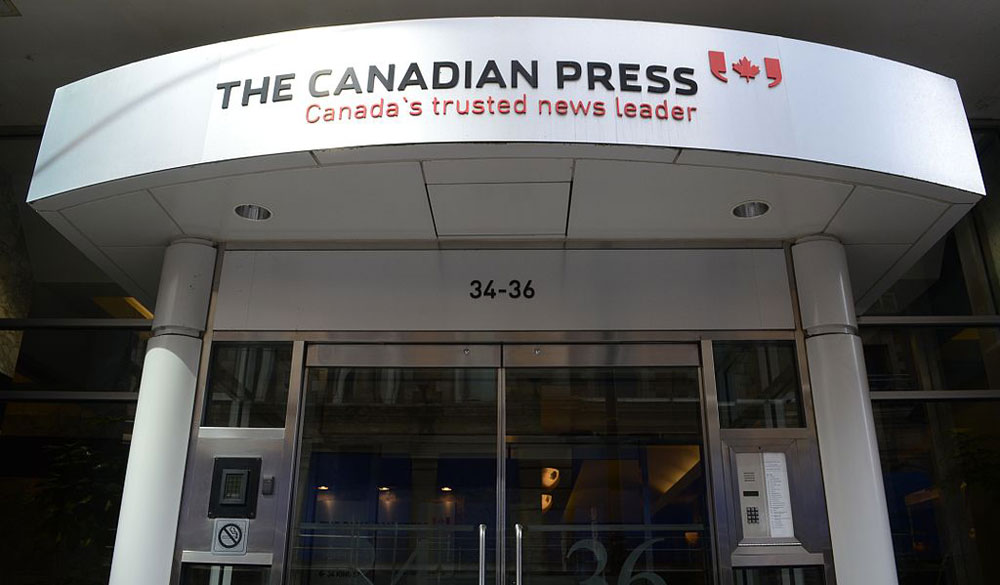
Last March, NPQ North reviewed the release of Investing in the Middle Class (Government of Canada’s 2019 budget document) with an eye to announcements of interest for the nonprofit sector. One such note was a proposal for tax breaks and other supports for journalism and media organizations, effectively creating a new type of nonprofit corporation, the “Qualified Canadian Journalism Organization (QCJO).”
As NPQ has noted, 270 local news outlets have either closed or merged in 194 communities across Canada since 2008, and the country lags far behind other jurisdictions, including the United States, where there has been a wave of developments in nonprofit journalism.
When politics, media, and government funding are thrown into the same mix, controversy is to be expected and scrutiny is warranted. The QCJO and related measures by the Liberal government of Prime Minister Justin Trudeau quickly drew a variety of critiques, ranging from the blatantly political, with claims that this could open the door to de facto media bribery, as well as more practical concerns about how to decide which “media” should be eligible and/or deserving of QCJO benefits.
Conservative MP Pierre Poilievre described the situation as “dangerous,” expressing concern about how government-appointed panels could potentially be seen as peddlers of media influence, while New Democratic Party leader Jagmeet Singh chided the federal government for spending its own advertising dollars on Google and Facebook, declaring, “If they were to spend that money in local media, in media in Canada, that would be a better use of our public dollars.”
Various media organizations weighed in, with the Canadian Association of Journalists (CAJ) outlining a number of concerns related to transparency and an overly prescriptive definition for QCJO eligibility and a too-low threshold for media salaries. The CAJ succeeded in negotiating additional transparency measures, including a waiver of the requirement for expert panelists to sign confidentiality agreements.
Although changes to the panel process might have been seen as a concession by Heritage Minister Pablo Rodriguez, the changes may well have helped diffuse much of the partisan hyperbole about the panel and the QCJO legislation. With the full public release of their minutes (28 pages) and report (13 pages) on July 18th, the Journalism and Written Media Independent Panel of Experts (JWMIPE) not only moved quickly, they seem to have succeeded in focusing attention on practical issues of implementation, clearly motivated by a determination to get funds moving sooner rather than later.
Panel chair (and publisher of the Winnipeg Free Press) Bob Cox made this expectation clear, with the panel anticipating—and attempting to head off—delays associated with deciding who will administer the QCJO, as well as a mechanism for dealing with disputes.
“We’ve tried to provide criteria and definitions to the government, so that they can just have the Canada Revenue Agency [CRA] administer the program—in other words, expedite it.”
The CRA is already the lead administrator of charitable organizations in Canada, a system that itself has come under significant criticism as discussed last issue with the release of the Senate of Canada’s 190-page report on the charitable sector. Despite these imperfections, the recommendation to assign the QCJO file to the CRA makes bureaucratic sense and would also be less likely to generate concerns of political interference.
The panel also anticipated that whether its recommendations regarding eligibility are accepted (in whole or in part) there exists substantial potential for controversy regarding which organizations are deemed qualified or unqualified for QCJO status.
Sign up for our free newsletters
Subscribe to NPQ's newsletters to have our top stories delivered directly to your inbox.
By signing up, you agree to our privacy policy and terms of use, and to receive messages from NPQ and our partners.
To address this, JWMIPE, having finished its own work, recommended yet another panel of experts, including people from postsecondary journalism education programs in Canada, to consult with the CRA when the agency is unsure of an applicant’s eligibility. They also recommended that a list of organizations that have been deemed eligible for funding should be made public—a practice consistent with applications for charitable status under the current CRA regime.
“Most of the recommendations require legislative change…but they can implement the measures they’ve already passed,” said Cox. “It’s urgent that they move quickly.”
Some media organizations have already taken steps to raise funds outside of traditional methods such as advertising and subscriptions, led by Le Devoir, based out of Montréal. The paper has established Les amis du Devoir (Friends of Le Devoir), a nonprofit foundation whose mission is to financially support Le Devoir through philanthropic actions, the organization of benefit activities, and the development of fundraising campaigns.
Le Devoir, through their Globe and Mail editorial, expressed displeasure that thus far the federal government has not included the possibility of a foundation like Les amis as potential recipients for QJCO benefits.
In a separate statement to the Globe, Brian Myles, the publisher of Le Devoir, did not mince words. “It’s profoundly unjust for Le Devoir and other organizations that had the intent to set up foundations,” Myles said. “There’s no way we can live with a program that benefits very few, if not only one player, and the rest are excluded…I’m pretty surprised that the government crafted such a half-baked measure.”
In Le Devoir’s submission to the panel, they said they expect $700,000 in contributions to Les amis this year, up from $550,000 last year, and they believe that being eligible for charitable tax incentives could boost donations by up to 1.5 times current levels.
The Le Devoir strategy of combining philanthropy and journalism is not new, being described in their editorial as dating back to 1916 (having recently been updated to the Canada Not-for-profit Corporations Act). Writing in his Global Philanthropy blog, charity law expert Mark Blumberg, suggested that further innovation might be possible under current charity regulations, also noting that it might be unrealistic to expect the QJCO to solve all the problems facing modern media outlets: “It should not be too difficult to establish a registered charity and have the charity hire the newspaper to implement certain charitable projects using a ‘structured arrangement’ with ‘direction and control’. It is unlikely that any [government] proposal is going to allow unlimited donations to be used to support for-profit companies.”
That media outlets may want to take greater control of their own destiny and develop their own innovations and workarounds (heading further down the type of path set out by Les amis) seems like sound advice, because no matter what recommendations from the panel are accepted or refused, in the end, the QJCO is not a “media bailout” that will save the industry. As Blumberg concludes:
The amount that can actually be raised through philanthropy may be smaller than many anticipate, and in many cases crowdfunding that relies on a large number of small donors and does not involve registered charities may even be more effective. As well, for decades newspapers and others have had the ability to create affiliated charities that could fund certain activities, and many of them have not done that, as they prefer to wait years or decades for a ‘windfall’ [from government] that may never appear.
Last week, NPQ covered nonprofit-news-related policy proposals emerging in Ohio. It will be interesting to watch how this policy area progresses over the next year. We anticipate it may develop its next stages relatively quickly.













